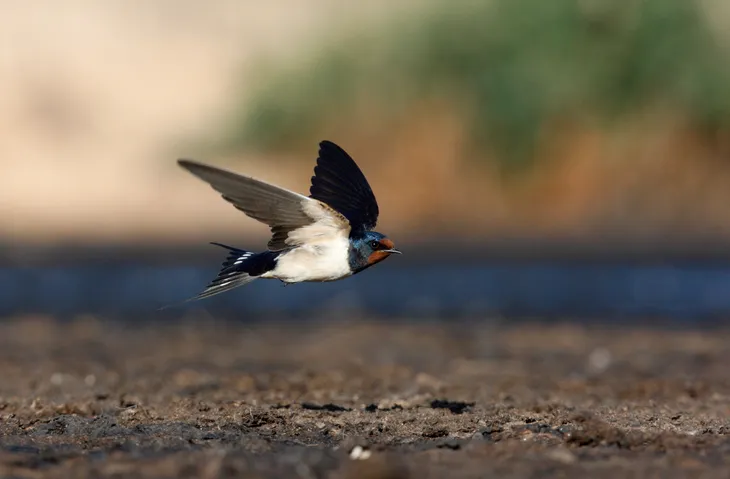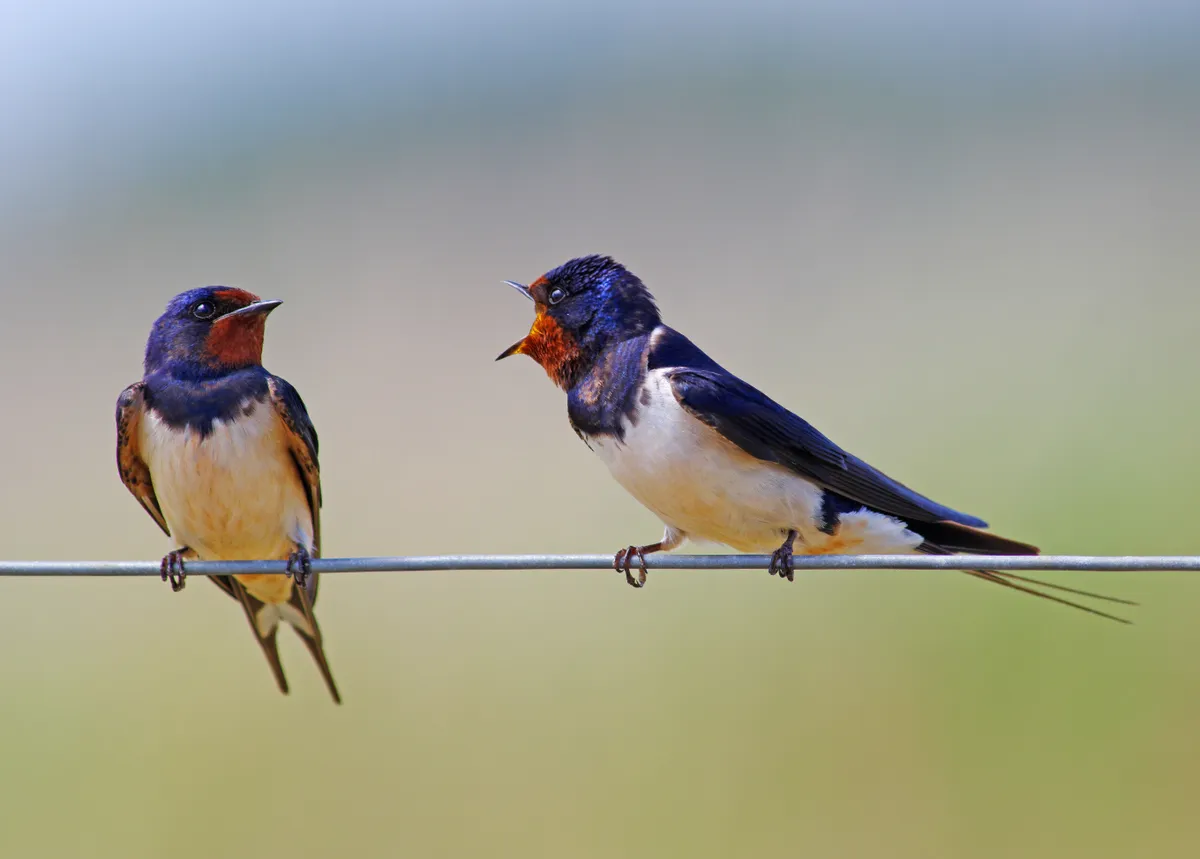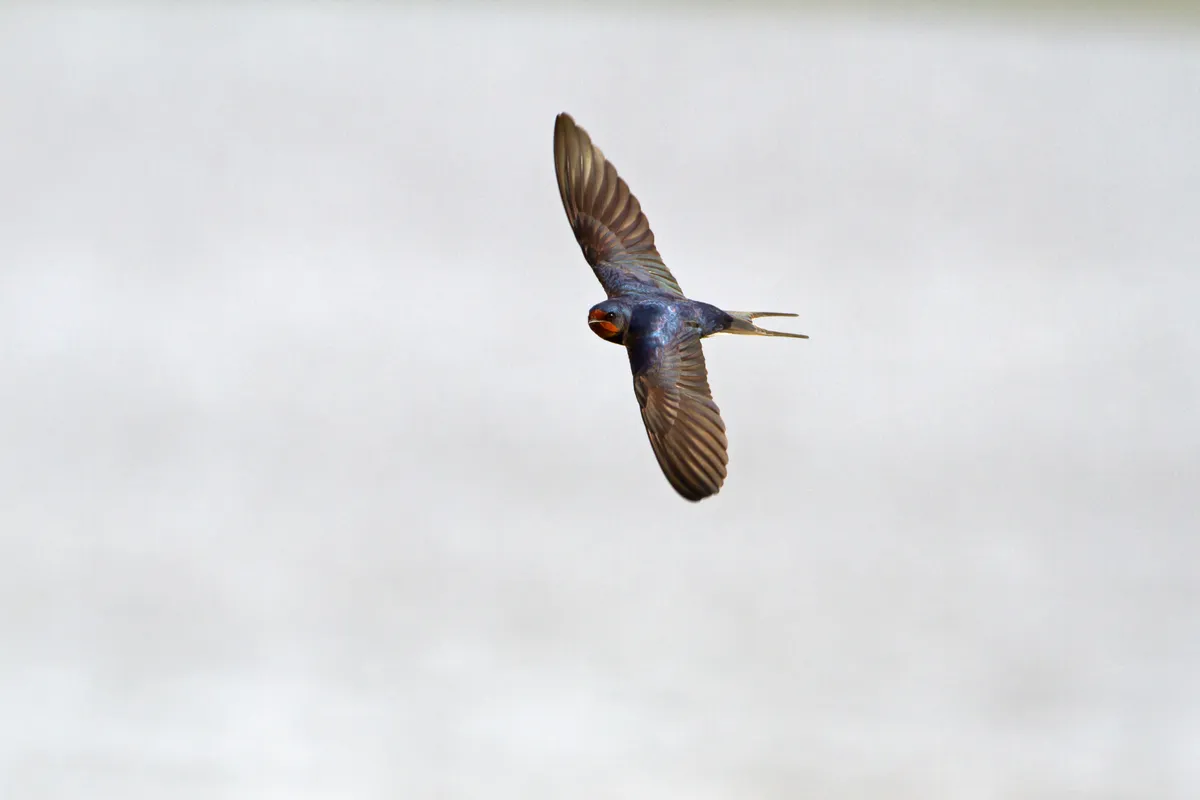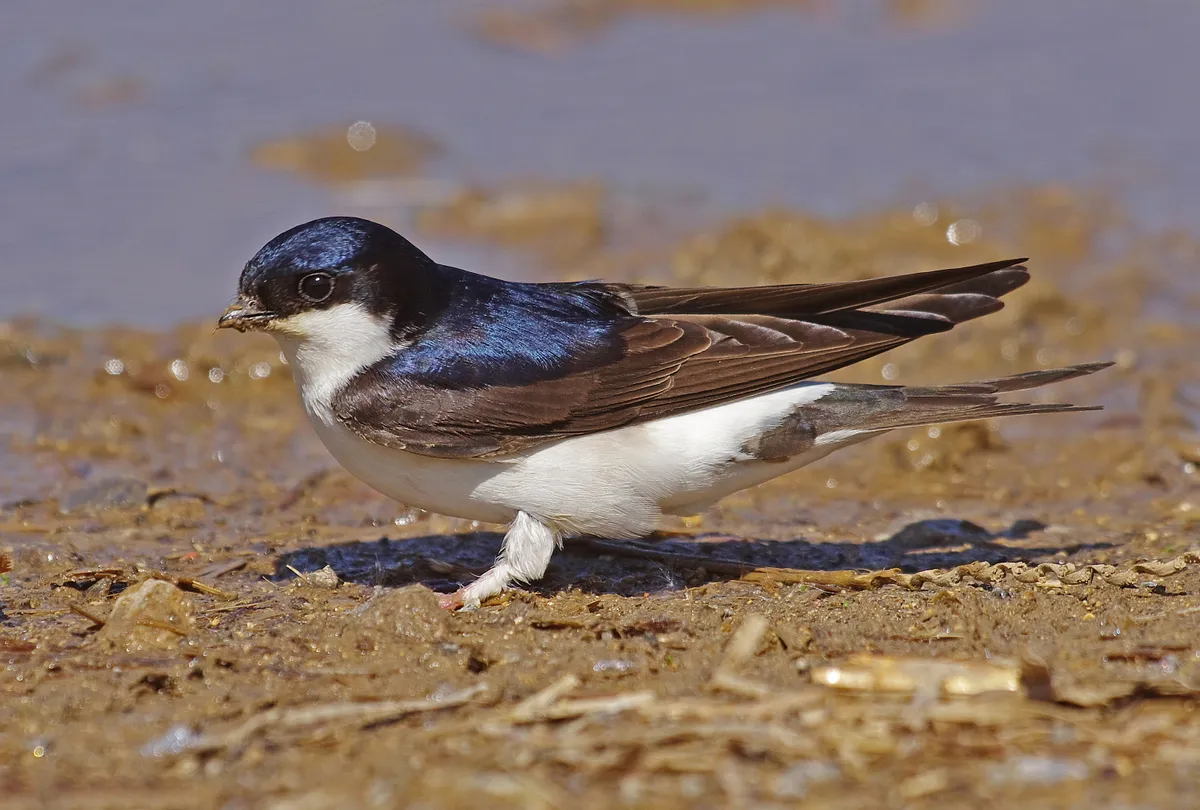On a fine, sunny day, around the last week of March or the first week of April, look to the sky and you may catch sight of a small, slender bird flying low and purposefully towards the north. The chances are it's a swallow, newly returned from its winter quarters thousands of miles away in southern Africa.
Why do swallows migrate from Africa to Britain in spring and then return again in late summer? When do they breed and how many chicks to they have? How can you tell the difference between swallows and their similar-looking cousins, swifts and martins?
Find out more about this incredible little bird with our beginner's guide to swallows.

Swallows in literature
Shakespeare celebrated the swallow’s return, with one character noting its connection with the seasons: “The swallow follows not summer more willing than we your lordship.” Aristotle did, too, though he also warned: “One swallow does not a summer make, nor one fine day.” But even as we welcome its return, how many of us stop to wonder where this bird has been in the half a year since it left our shores? Or to ask why it comes here at all?
Why do swallows migrate to Britain in spring?
Like all summer visitors to Europe, swallows fly north to take advantage of the longer hours of daylight, abundant sources of food (in their case, flying insects) and, especially, the lack of competition in these temperate latitudes. In its African winter-quarters, our swallow must share its airspace with more than a dozen other related species, whereas in Britain there are only two others: the house and sand martins.
So although it is a very long way to fly – especially for a bird that weighs less than an ounce (about 20 grams) – this epic journey almost halfway across the globe is definitely worth it. All the more so for us, for whose heart doesn’t leap when they see these beautiful and elegant birds hawking for insects in the clear blue sky?
When do swallows breed?
After arriving in Europe, the birds may wait on the other side of the Channel until weather conditions are suitable for crossing. The first birds we see in spring are the males, which arrive back to find a suitable territory a few days before their mates. Once the female does return, however, swallows cannot afford a moment’s rest. As soon as they can, they begin courtship and breeding.
Where do swallows nest?
Swallows have long lived alongside human beings, nesting in man-made buildings such as barns (hence the official name ‘barn swallow’). They build a loosely made nest from grass lined with mud, often on a high beam. Here, the female lays her clutch of smooth and glossy eggs – between three to eight of them – which are coloured white with reddish speckling.
For the next two weeks or more, the female incubates the eggs while the male collects tiny insects to feed her all day long. The chicks are born after 14-19 days and are naked (apart from a thin coat of down) and blind. They are also hungry. From now on, both the parents spend every daylight hour going back and forth to the nest to feed their ever-growing brood.

When do swallows fledge?
After 10 days or so, the nest is beginning to get a bit cramped; by day 20 it is positively overcrowded. But still the baby birds won’t take the plunge – and who can blame them?
Finally, though, encouraged by calling from both adults, they leap into the unknown – literally, as this is their first experience of flight. Having experienced this unfamiliar mode of transport, they land awkwardly on a barn beam, roof or telegraph wire, where they pose unsteadily before mum or dad arrives with some welcome food. But they must soon learn to fend for themselves, for swallows usually have two – and in good summers, three – broods, so the parents will soon have a new family to feed.

Threats to swallows
Young swallows are most vulnerable in these first few days away from the nest. Hobbies – acrobatic falcons that look like a giant swift – patrol the airspace above, diving down to pursue a potential victim. They may in turn be chased off by the adults, whose gentle twittering turns into a frantic alarm call when any predator is around.
But if the youngsters do manage to survive, then sometime towards the end of August or the beginning of September, they gather with the adults in groups on wires, like musical notes on a stave. For the next few weeks there may be several false starts: they will fly high into the air, then return back to their perch a few minutes later.
When do swallows return to Africa?
One day from the middle of September onwards, swallows will head off for good. Their epic journey takes them south over the Channel, across Europe, the Mediterranean Sea, the Sahara Desert and the jungles of equatorial Africa, until Table Mountain comes into view, signalling that they have at last reached their destination. Meanwhile we are left alone and bereft, waiting for that magical moment, sometime next spring, when the birds that hatched out here earlier in the year make their dramatic – and very welcome – return.
Long-distance migrants, swallows breed on one continent and winter on another. Our swallows, along with the 20 million that visit Europe and western Asia, travel to Africa; others, which breed in Asia, winter in southeast Asia and north Australia. Across the Atlantic, North American swallows head all the way down to South America.

How to swallows navigate when migrating?
Unlike most songbird migrants, swallows and martins fly by day, feeding on small flying insects as they go. They navigate using the Earth’s magnetic field, polarised light and visual landmarks, which incredibly allow swallows to return to the place they were born.
How far do swallows fly?
British swallows winter across sub-Saharan Africa, as far as the Cape – a journey of more than 6,000 miles. They usually leave there in February or March, heading north to reach Europe a few weeks later, and arrive in the UK in late March or early April.

What is the difference between swallows, swifts and martins?
The swallow is larger than its relatives, the house and sand martins. It has a bluish head and back, russet face and throat, creamy underparts and a long, forked tail. Swallows generally fly fairly low to the ground, especially when feeding, and nest in barns or other farm buildings.
House martin
The house martin, which nests under the eaves of houses, is smaller and more compact than the swallow, with dark blue upperparts, white underparts and a prominent white rump. The wings are triangular, rather than long and swept back, and the tail is short with a notch
at the end.

Sand martin
The sand martin is the smallest of the three hirundines (martins and swallows), with brown upperparts and creamy-white underparts, and a brown band across its chest. Like the house martin, it has triangular wings and a short tail. It is usually found near water and perches on overhead wires and branches.

Swift
The swift, which is not related to swallows and martins, is entirely sooty black, with long, narrow wings and a short tail giving a ‘bow-shaped’ silhouette. It breeds in the eaves and attics of old buildings, but otherwise spends its entire life airborne – feeding, sleeping and even mating on the wing.


